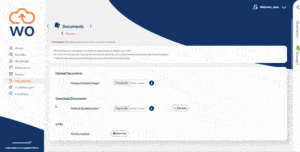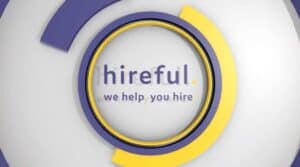In the past, this was a paper-based job – details would be hand-written onto forms which would be physically stored. This was the old business world of filing cabinets and desks weighed down with papers, reports and folders.
But then digital technology arrived and we started to benefit from paperless ways of processing information – Excel spreadsheets, emails, PDFs and Word documents. And these remain the main tools of the trade for most hiring teams.
But while these processes are technically ‘digital’ – they fail to deliver many of the benefits that we associate with today’s digitally connected world. The key difference is cloud-based connectivity.
This can be demonstrated by comparing the different ways that contracts and offer letters can be handled:
Paper-based approach
It’s still common for contracts to be paper documents which are posted out to successful candidates. They are physically signed by the recipient and then sent back to the employer prior to job start.
It’s a tried and tested approach but it’s also makes onboarding such a lengthy process – often taking weeks for the paperwork to be sent and received. If any changes or modifications are required, this can become painfully slow.
There’s also the problem of physical documents getting ‘lost in the post’, a particular issue when contracts contain personal information that GDPR legally requires employers to properly protect.
Digital/paper approach
Instead of posting off a paper document, many hiring teams will email it as an attachment in the format of Word doc or PDF file. The recipient has to print the document out, physically sign it and then return it by post.
So while this reduces times, it retains many of the problems with a purely paper-based approach. There’s still the time and risks associated with having to send information via the postal system.
There’s also the general inconvenience of requiring docs to be printed out – many people no longer own printers. And if they do, It’s liable to need reconnecting and, more often than not, empty ink cartridges will need replacing. It’s a hassle.
Cloud-based approach
Rather than documents being sent out to successful candidates – they access them via an online portal. They have instant access from wherever they are and with secure digital signing, it’s a completely paperless process.
It means hiring teams receive completed paperwork as soon as it’s signed, with none of the risks relating to documents being lost in the post. If changes are required, they can be easily made – allowing administration to be done in days rather than weeks.
This creates a fast and simple process for an incoming employee, minimising the stresses that can be caused by lengthy onboarding times. For hiring teams, it removes the laborious and error-prone task of manually inputting information from paper documents.
So what’s important for effective onboarding isn’t that processes are digital – it’s that they’re digitally connected. This is what a cloud-based management approach delivers. It unlocks all the benefits of real-time and automated processes.
It provides a level of scalability and flexibility that can’t be matched by traditional ways of managing information. A cloud-based system is just as effective when managing five or five thousand new hires.
Along with ease and efficiency, a cloud-based process also offers major compliance benefits. With information accessed online, it prevents the need for multiple copies or versions of documents to exist – something which leads to data becoming dangerously fragmented.
Book a discovery call with us and find out how ‘digital’ your onboarding processes are.




